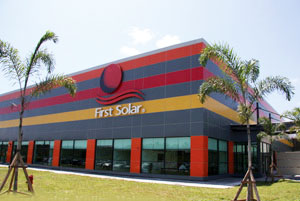Economy of Malaysia
| Currency | Malaysian ringgit (MYR, RM) |
|---|---|
| Calendar year | |
Trade organisations | WTO, APEC, ASEAN, EAS, IMF, World Bank |
| Statistics | |
| Population | 32.7 million (2021) |
| GDP | $372.7 billion (nominal, 2021) |
GDP growth | 3.1% (2021) |
GDP by sector | Agriculture: 7.1%, Industry: 37.8%, Services: 55.1% (2021) |
| 2.5% (2021) | |
Population below poverty line
| 5.6% (2020) |
| 41.1 (2019) | |
Labour force | 15.9 million (2021) |
| Unemployment | 4.8% (2021) |
Main industries | Electronics, automotive, construction, palm oil, petroleum, natural gas, rubber, timber |
| External | |
| Exports | $299.3 billion (2021) |
Export goods | Electronics, petroleum, liquefied natural gas, chemicals, machinery, optical and scientific equipment, palm oil, rubber, timber |
Main export partners | China 15.5%, Singapore 13.9%, United States 11.1%, Hong Kong 6.6%, Japan 6.4% (2021) |
| Imports | $238.1 billion (2021) |
Import goods | Electronics, machinery, petroleum products, plastics, vehicles, iron and steel products, chemicals |
Main import partners | China 23.1%, Singapore 10.9%, United States 8.1%, Japan 7.7%, Taiwan 5.1% (2021) |
| Public finances | |
| 67.6% of GDP (2021) | |
| Revenues | $65.3 billion (2021) |
| Expenses | $82.1 billion (2021) |
| $116.2 billion (2021) | |
All values, unless otherwise stated, are in US dollars. | |
The economy of Malaysia is the fourth largest in Southeast Asia, after Indonesia, Thailand, and the Philippines. It is a newly industrialized market economy that is relatively open and state-oriented. Malaysia has a GDP of $372.7 billion (nominal, 2021), making it the 36th largest economy in the world.
Economic History[edit | edit source]
Malaysia's economic history can be traced back to the early 20th century when it was a major exporter of rubber and tin. The country diversified its economy in the 1970s and 1980s, moving towards manufacturing and services. The New Economic Policy (NEP) was introduced in 1971 to promote economic growth and address socio-economic disparities.
Sectors[edit | edit source]
Agriculture[edit | edit source]
Agriculture contributes 7.1% to Malaysia's GDP. The country is one of the world's largest producers of palm oil, rubber, and timber. Other significant agricultural products include cocoa, pepper, and tropical fruits.
Industry[edit | edit source]
The industrial sector accounts for 37.8% of GDP. Key industries include electronics, automotive, construction, petroleum, and natural gas. Malaysia is a significant exporter of semiconductors and electronic components.
Services[edit | edit source]
The services sector is the largest contributor to GDP, accounting for 55.1%. Major sub-sectors include finance, tourism, education, and healthcare. Kuala Lumpur, the capital city, is a major financial center in the region.
Trade[edit | edit source]
Malaysia is a major trading nation, with exports amounting to $299.3 billion in 2021. The country exports a wide range of products, including electronics, petroleum, liquefied natural gas, chemicals, machinery, optical and scientific equipment, palm oil, rubber, and timber. Its main export partners are China, Singapore, the United States, Hong Kong, and Japan.
Imports totaled $238.1 billion in 2021, with key import goods including electronics, machinery, petroleum products, plastics, vehicles, iron and steel products, and chemicals. Major import partners are China, Singapore, the United States, Japan, and Taiwan.
Foreign Direct Investment[edit | edit source]
Malaysia has attracted significant foreign direct investment (FDI), with a total of $162.1 billion in 2021. The country offers a favorable investment climate, with incentives for foreign investors in various sectors, including manufacturing, services, and high technology.
Challenges[edit | edit source]
Despite its economic success, Malaysia faces several challenges, including income inequality, reliance on exports, and the need for economic diversification. The government has implemented various policies to address these issues, including the Shared Prosperity Vision 2030.
See also[edit | edit source]
- Economy of Southeast Asia
- New Economic Policy (Malaysia)
- Palm oil production in Malaysia
- Tourism in Malaysia
- Kuala Lumpur
References[edit | edit source]
External links[edit | edit source]
Navigation: Wellness - Encyclopedia - Health topics - Disease Index - Drugs - World Directory - Gray's Anatomy - Keto diet - Recipes
Search WikiMD
Ad.Tired of being Overweight? Try W8MD's physician weight loss program.
Semaglutide (Ozempic / Wegovy and Tirzepatide (Mounjaro / Zepbound) available.
Advertise on WikiMD
WikiMD is not a substitute for professional medical advice. See full disclaimer.
Credits:Most images are courtesy of Wikimedia commons, and templates Wikipedia, licensed under CC BY SA or similar.Contributors: Prab R. Tumpati, MD




